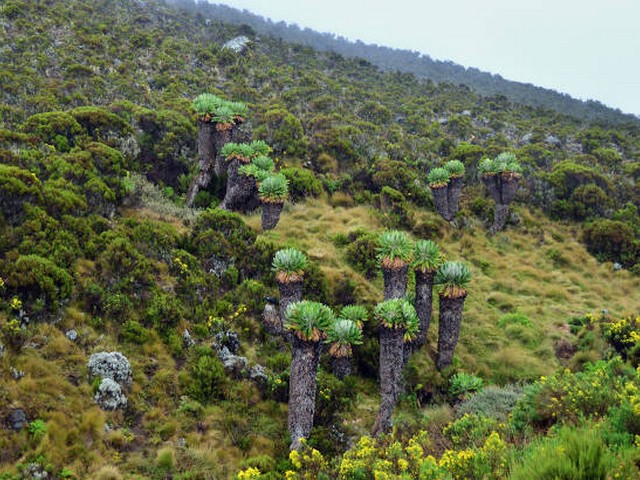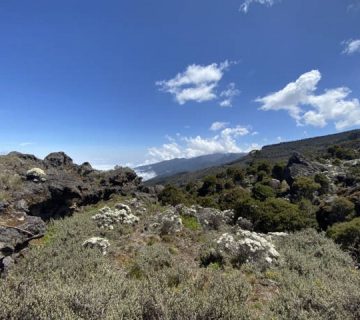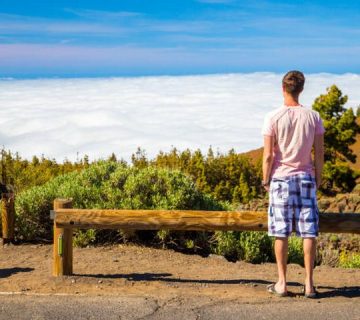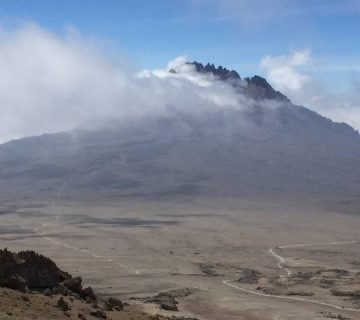Wildlife Spotting During Kilimanjaro Trek: A Journey Through Nature’s Gallery
Introduction: Embrace the Wild
Mount Kilimanjaro, standing majestically at 5,895 meters, is not only Africa’s tallest peak but also a canvas of ecological diversity. Offering more than just a trekking experience, Kilimanjaro invites adventurers to witness a world where wildlife roams freely in its natural habitat. In this blog post, we explore the enchanting wildlife spotting opportunities that enhance the trekking experience on Kilimanjaro. Discover the creatures that call this iconic mountain their home and learn why booking your climb with Kilimanjaro Centre for Trekking and Ecotourism (KCTE) could be the gateway to an unforgettable adventure.
The Ecological Wonder of Kilimanjaro
The Zones of Life
Kilimanjaro is unique not just in height but also in its ecological stratification. As trekkers ascend, they pass through distinct climatic zones — each hosting different species of flora and fauna.
- Cultivated Zone: Starting at the base, this zone is rich in cultivated land where you might spot various birds and monkeys amidst the farms.
- Rainforest Zone: As you ascend, the lush rainforest is alive with the cries of Colobus monkeys and vibrant birdlife, including the Turaco and Hornbills.
- Heath and Moorland Zone: Moving higher, the landscape changes to heath and moorland, home to unique species like the Kilimanjaro shrew and the occasional elephant.
- Alpine Desert Zone: Sparse in vegetation, this zone offers sightings of hardy species that can withstand harsh conditions, including rodents and insects.
- Arctic Zone: The summit zone, resembling a lunar landscape, where only the hardiest of species, like lichens, can survive.
A Closer Look at Kilimanjaro’s Wildlife
Kilimanjaro’s biodiversity is as vast as it is captivating. While large mammals like elephants and leopards may be rarely seen, the smaller, often overlooked species provide thrilling encounters. Birds such as the Alpine Chat and White-necked Raven are common sights. The dense forests lower down provide cover for blue monkeys, while the elusive bush baby might appear during night treks. The higher zones, with their sparse vegetation, challenge trekkers to spot well-camouflaged insects and resilient plant species that defy harsh conditions.
Best Routes for Wildlife Spotting
Choosing Your Path
Each route up Kilimanjaro offers different opportunities for wildlife encounters:
- Marangu Route: Known as the "Coca-Cola" route, this path is well-traveled and easier, making it suitable for less experienced trekkers. The dense rainforest section of this route is perfect for bird watchers.
- Machame Route: Offering a more challenging trek, the Machame route passes through varied landscapes, providing richer opportunities for spotting diverse wildlife.
- Lemosho Route: Known for its scenic splendor and lesser crowds, this route maximizes wildlife viewing potential in the forested sections before merging with the Machame route.
Tips for Maximizing Wildlife Spotting
- Walk quietly and keep alert: Animals are often shy; a quiet approach increases chances of sightings.
- Carry binoculars: Enhance your vision to spot distant or small creatures.
- Trek at dawn or dusk: Many animals are most active during these times.
- Stay on marked trails: This ensures both your safety and the protection of wildlife habitats.
The Role of Responsible Trekking
Sustainability and Conservation
At KCTE, we are deeply committed to sustainable tourism practices that protect the environment and contribute to wildlife conservation. We encourage our trekkers to follow guidelines that minimize impact:
- Leave no trace: Carry out everything you bring in.
- Respect wildlife: Maintain a safe distance; never feed or attempt to touch the wildlife.
- Support local conservation efforts: Part of your booking fees contributes to conservation initiatives.
Preparing for Your Trek
What to Bring
- Suitable gear: Weather-appropriate clothing, sturdy boots, and a comfortable backpack.
- Health essentials: Sunscreen, mosquito repellent, first-aid kit, and necessary medications.
- Photography equipment: A camera with a good zoom lens will help you capture distant wildlife without disturbance.
Physical and Mental Preparation
- Fitness: Start conditioning your body months in advance with regular hikes and cardiovascular exercises.
- Acclimatization: Consider routes that allow for better acclimatization to reduce the risk of altitude sickness.
Why Choose KCTE for Your Kilimanjaro Adventure?
Choosing the right tour operator is critical for an enriching and safe trekking experience. At Kilimanjaro Centre for Trekking and Ecotourism (KCTE), we offer:
- Experienced guides: Our guides are knowledgeable about local wildlife and trained in emergency response.
- Customizable itineraries: Whether you’re in for a leisurely pace or a challenging expedition, we tailor the trek to your needs.
- Commitment to sustainability: We practice and promote responsible tourism that respects the natural environment and local communities.
Conclusion: The Call of Kilimanjaro
Mount Kilimanjaro is more than just a climb; it’s an exploration of the vibrant life that thrives at every altitude. From the dense rainforests at its base to the arctic conditions at its peak, Kilimanjaro offers a unique opportunity to connect with nature in its purest form. Book your trek with Kilimanjaro Centre for Trekking and Ecotourism (KCTE) and be part of a journey that respects both the thrill of adventure and the sanctity of the natural world.
FAQs
What is the best time of year for wildlife spotting during Kilimanjaro treks?
The best wildlife spotting can be experienced during the dry seasons from June to October and from January to March when visibility is better and trails are accessible.
Are there any dangerous animals on Kilimanjaro?
While Kilimanjaro is home to wildlife like buffaloes and elephants, encounters with dangerous animals are extremely rare. Our guides are trained to ensure your safety throughout the trek.
Can I take photographs of the animals?
Yes, photography is encouraged, but we ask trekkers to respect the wildlife by keeping a safe distance and not attempting to feed or touch the animals.
Embark on a journey where every step introduces a new scene in nature’s gallery. Book your climb today and experience the magic of wildlife spotting on Kilimanjaro with KCTE.




